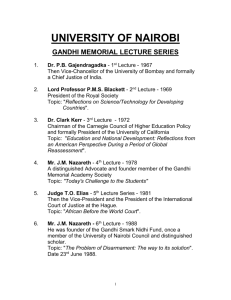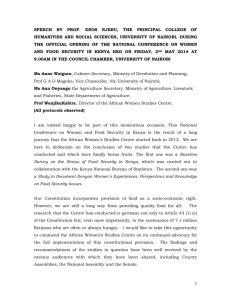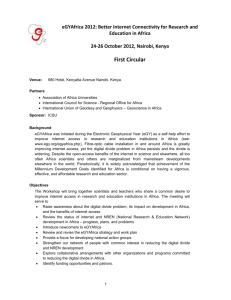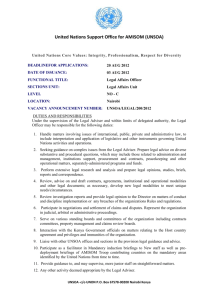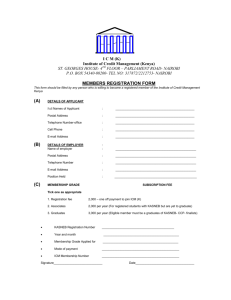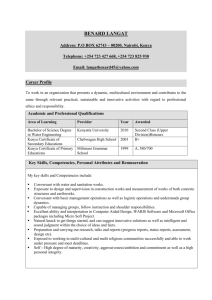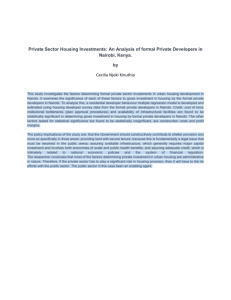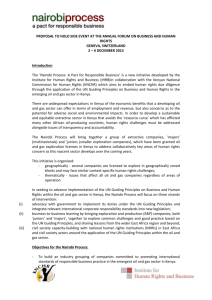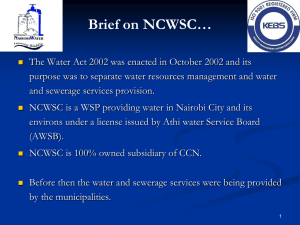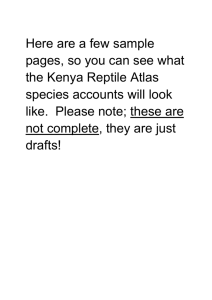Final Project Proposal
advertisement
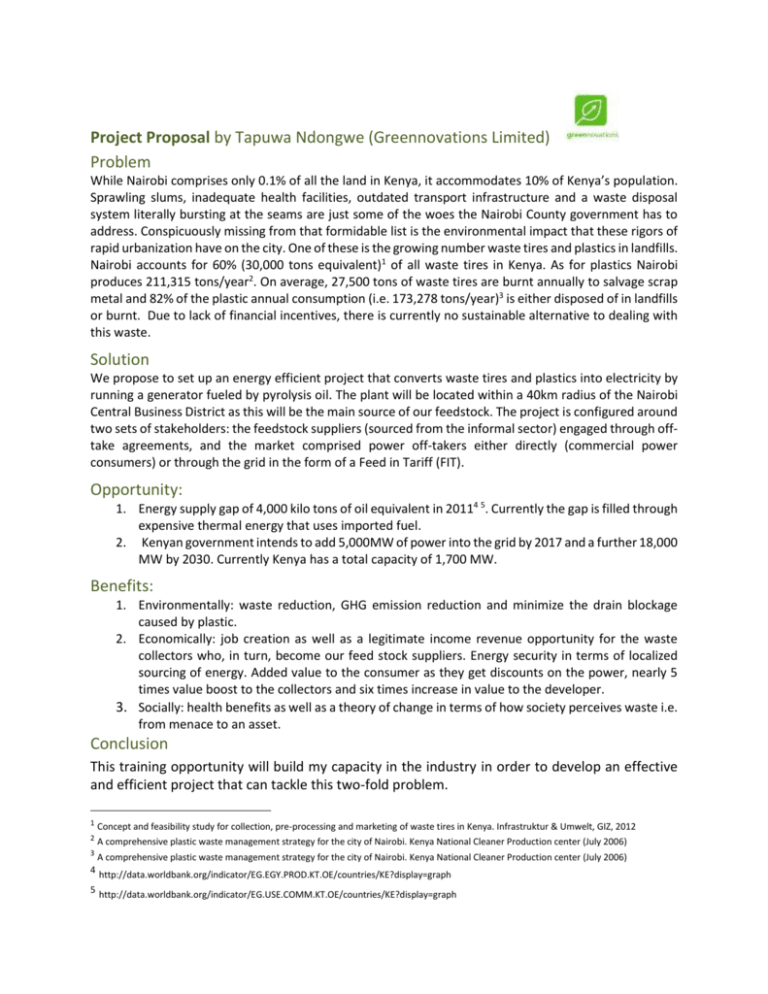
Project Proposal by Tapuwa Ndongwe (Greennovations Limited) Problem While Nairobi comprises only 0.1% of all the land in Kenya, it accommodates 10% of Kenya’s population. Sprawling slums, inadequate health facilities, outdated transport infrastructure and a waste disposal system literally bursting at the seams are just some of the woes the Nairobi County government has to address. Conspicuously missing from that formidable list is the environmental impact that these rigors of rapid urbanization have on the city. One of these is the growing number waste tires and plastics in landfills. Nairobi accounts for 60% (30,000 tons equivalent)1 of all waste tires in Kenya. As for plastics Nairobi produces 211,315 tons/year2. On average, 27,500 tons of waste tires are burnt annually to salvage scrap metal and 82% of the plastic annual consumption (i.e. 173,278 tons/year)3 is either disposed of in landfills or burnt. Due to lack of financial incentives, there is currently no sustainable alternative to dealing with this waste. Solution We propose to set up an energy efficient project that converts waste tires and plastics into electricity by running a generator fueled by pyrolysis oil. The plant will be located within a 40km radius of the Nairobi Central Business District as this will be the main source of our feedstock. The project is configured around two sets of stakeholders: the feedstock suppliers (sourced from the informal sector) engaged through offtake agreements, and the market comprised power off-takers either directly (commercial power consumers) or through the grid in the form of a Feed in Tariff (FIT). Opportunity: 1. Energy supply gap of 4,000 kilo tons of oil equivalent in 20114 5. Currently the gap is filled through expensive thermal energy that uses imported fuel. 2. Kenyan government intends to add 5,000MW of power into the grid by 2017 and a further 18,000 MW by 2030. Currently Kenya has a total capacity of 1,700 MW. Benefits: 1. Environmentally: waste reduction, GHG emission reduction and minimize the drain blockage caused by plastic. 2. Economically: job creation as well as a legitimate income revenue opportunity for the waste collectors who, in turn, become our feed stock suppliers. Energy security in terms of localized sourcing of energy. Added value to the consumer as they get discounts on the power, nearly 5 times value boost to the collectors and six times increase in value to the developer. 3. Socially: health benefits as well as a theory of change in terms of how society perceives waste i.e. from menace to an asset. Conclusion This training opportunity will build my capacity in the industry in order to develop an effective and efficient project that can tackle this two-fold problem. 1 Concept and feasibility study for collection, pre-processing and marketing of waste tires in Kenya. Infrastruktur & Umwelt, GIZ, 2012 2 A comprehensive plastic waste management strategy for the city of Nairobi. Kenya National Cleaner Production center (July 2006) 3 A comprehensive plastic waste management strategy for the city of Nairobi. Kenya National Cleaner Production center (July 2006) 4 http://data.worldbank.org/indicator/EG.EGY.PROD.KT.OE/countries/KE?display=graph 5 http://data.worldbank.org/indicator/EG.USE.COMM.KT.OE/countries/KE?display=graph
